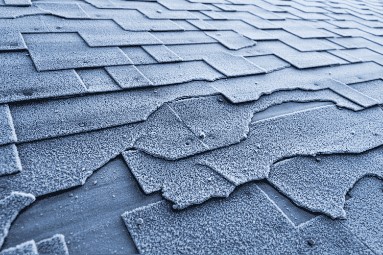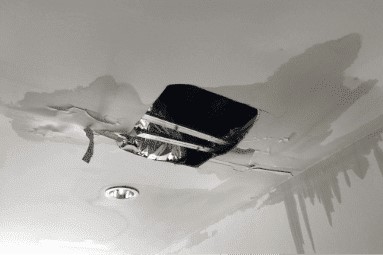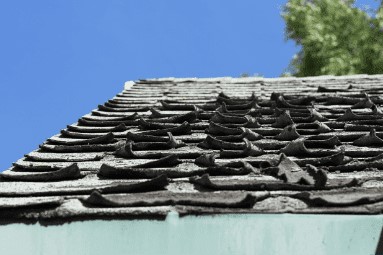WHAT ARE THE MOST COMMON TYPES OF ROOF DAMAGE?
A variety of roof damage can occur, but some are more common than others. A few of the most common roof damages are:
A variety of roof damage can occur, but some are more common than others. A few of the most common roof damages are:

One of the most common types of roof damage is shingle damage. Shingle damage on a roof can be caused by several weather-related factors like heavy snow, hail, or wind, as well as pests/critters, and falling objects like tree branches and/or improper roof care. When damaged shingles are left unrepaired, this often leads to roof leaks.
Roof leaks are a major problem and can cause extensive damage to the interior of a home. A roof leak can occur for a handful of reasons, such as damaged roofing material or faulty roof flashing. If roof leaks are left untreated, this can cause water to enter your home through the roof, causing extensive damage to your ceilings, walls, and floors


Shingle and tile loss occurs when the shingles or tiles on your roof are blown away or damaged by wind, hail, or heavy rain. This issue is more likely if a roof is installed improperly, as a well-installed roof should be able to withstand most weather. If shingles or tiles are missing on your roof, you will need to replace them to prevent further damage to your home.
Curling and buckling shingles are often caused by exposure to heat and sun radiation, and often occurs in older roofs. If left untreated, curling and buckling shingles can lead to water infiltration

A new roof installation can be quite an investment. You want to make sure the job is done right, and that starts with understanding the process.
When it comes to a new roof installation, there is a complex process that needs to be followed for it to be done properly. The first step is to measure the roof and calculate the amount of material that will be needed. The roofing contractor will create a layout of the roof. Next, the old roof will be removed, and the decking will be inspected to make sure it’s in good condition. If needed, a new roof decking will be installed. Then, the roofing material is installed, and finally, the ridge vent and flashing are put in place.